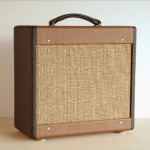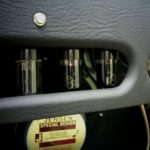Home › Forums › Design and Building › 2 Stroke Amplifier Design and Building › Amp Building Challenges
- This topic has 4 replies, 4 voices, and was last updated July 6, 2013 at 12:11 am by
 Walt.
Walt.
-
AuthorPosts
-
March 1, 2012 at 11:23 pm #5159
Andy
KeymasterHey TAN users,
I thought it might be helpful if some of the more experienced builders could let us know what things to watch out for in an amp build. What are the biggest pitfalls you have seen from your own builds or helping people with builds?
March 5, 2012 at 5:52 pm #5598DeluxeMan
ParticipantMy two stroke was only my second build but going into the next one I will make sure my layout is sorted before I start fixing and soldering. (Does not apply so much with a kit). Mine began by looking very tidy but by the time I had added an attenuator and line out and the couple of wires I had originally missed, things looked a bit untidier and it’s then harder to spot mistakes.
It’s obvious but double check your wiring before you fire it up initially, then do the same again.. It’s easy to miss an earth somewhere or similar especially at the end of a long day when you are very nearly there..
March 6, 2012 at 12:04 am #5599Andy
KeymasterGreat point! I cant stress enough the importance of double and triple checking all your wiring.
One tip I have found handy is to make a copy of the diagram. After the build, I check each lead and value and then mark off that connection point with a highlighter. Then I know what I’ve tested.
It seems like a pain at the time, since you are so excited to plug it in and see it work, but it saves so much time troubleshooting (not to mention safety) to take the extra time and triple check.
March 8, 2012 at 2:25 am #5600 RobinParticipant
RobinParticipantBuilding neat makes for easy mods and trouble shooting down the road. It takes a little more time but it pays off in the end.
Keep all lead (wiring) length to a minimum, especially the grid wires, if you have parasitic oscillation (like motorboating) check the grid wire length.
Pay attention to how the grounds are layed out. The filter caps that feed the preamp section should ground near the cathode resistor grounds for that section. The main power filters and screen filters should ground in the same place, where the output tube cathodes are grounded. This will help eliminate noise, hum and oscillation.
If your power transformer came with extra center taps that are not called for in the schematic, cut them off or coil them up and cap the ends, do not wire them to ground. If the PT didn’t come with a center tap for the heater circuit (6.3v), don’t forget to add an Artificial Center Tap for hum reduction.
If your new build does not work, chances are, it’s a disconnected or miss-connected lead or something mechanical like that. Check the entire circuit over for bad solder joints, missing grounds, grounds where there should not be one, before you decide to re-engineer the circuit or start replacing parts.
July 6, 2013 at 12:11 am #5896 WaltParticipant
WaltParticipantBeen a while since anyone added to this so I thought I’d throw in 2 cents..
All previous suggestions demand that you TAKE YOUR TIME. It’s hard, I know. You want it done NOW and you wanna crank it up! Work slowly and methodically – check your wiring as you go (I use the same method as ajswanson but print out my layouts before hand and check each connection off as it’s made). Plan each step, complete it , then force yourself to walk away from it for a while. When you come back you’ll be more focused on what comes next.
-
AuthorPosts
- You must be logged in to reply to this topic.
